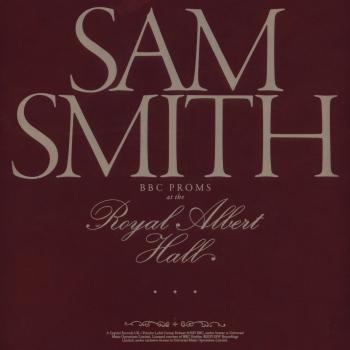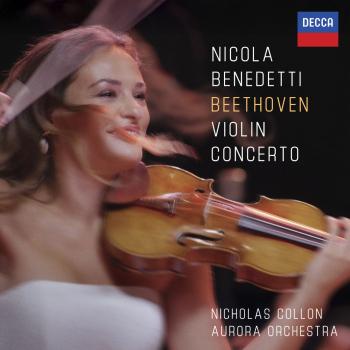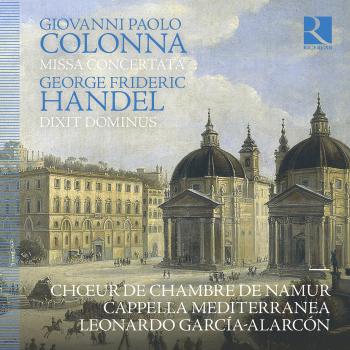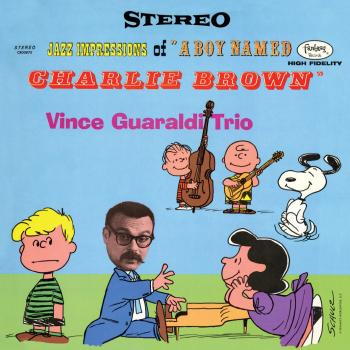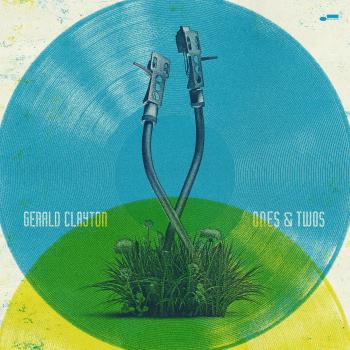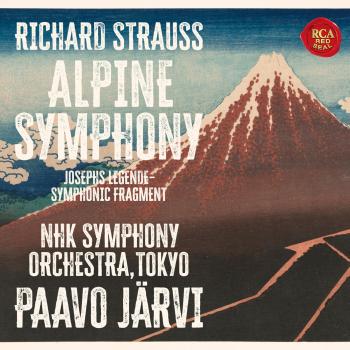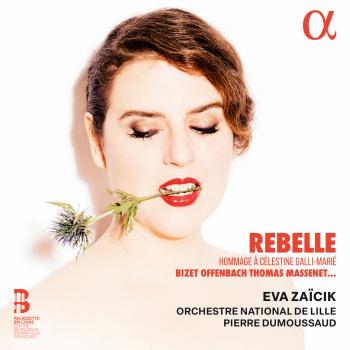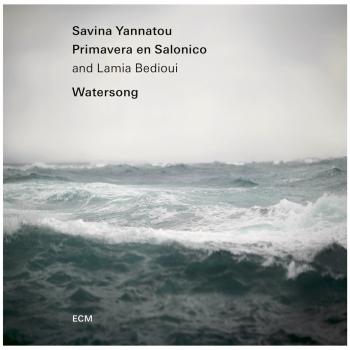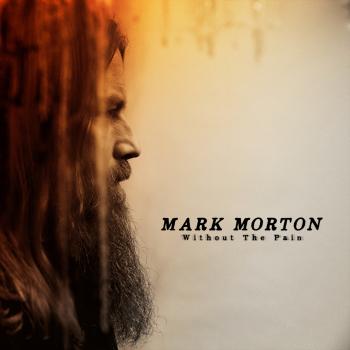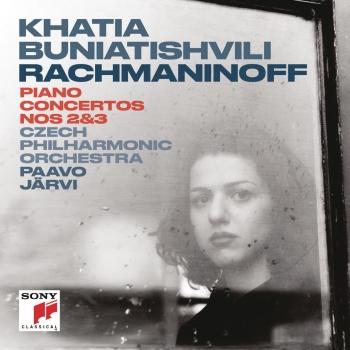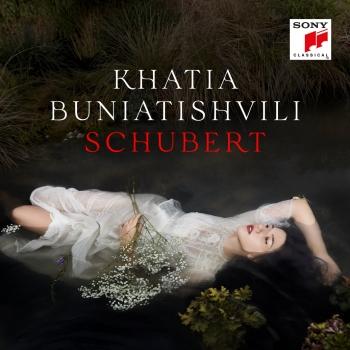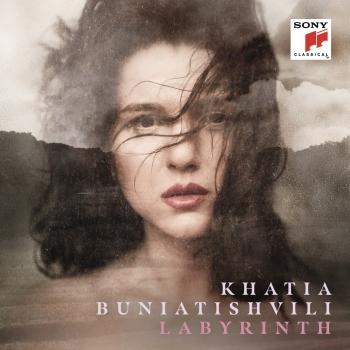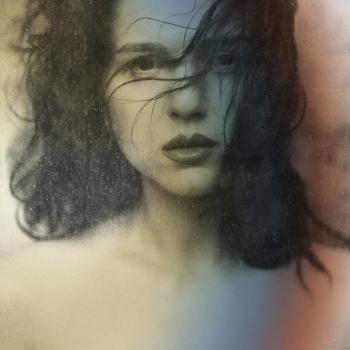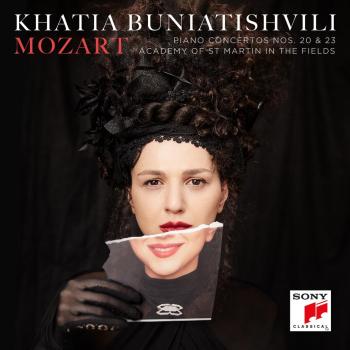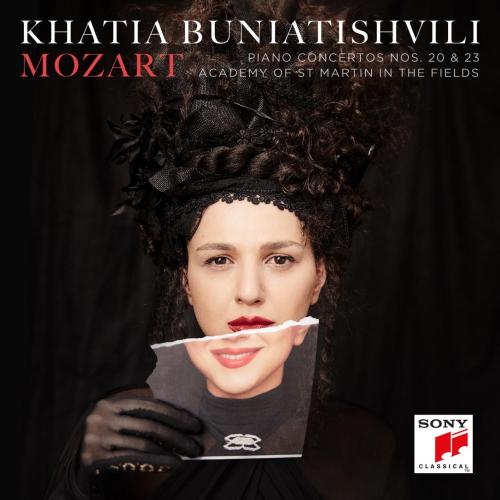
Mozart: Piano Concertos Nos. 20 & 23 Khatia Buniatishvili
Album info
Album-Release:
2024
HRA-Release:
25.10.2024
Label: Sony Classical
Genre: Classical
Subgenre: Instrumental
Artist: Khatia Buniatishvili
Composer: Wolfgang Amadeus Mozart (1756-1791)
Album including Album cover Booklet (PDF)
I`m sorry!
Dear HIGHRESAUDIO Visitor,
due to territorial constraints and also different releases dates in each country you currently can`t purchase this album. We are updating our release dates twice a week. So, please feel free to check from time-to-time, if the album is available for your country.
We suggest, that you bookmark the album and use our Short List function.
Thank you for your understanding and patience.
Yours sincerely, HIGHRESAUDIO
- Wolfgang Amadeus Mozart (1756 - 1791): Mozart: Piano Concerto No. 20 in D Minor, K.466:
- 1 Mozart: Piano Concerto No. 20 in D Minor, K.466: I. Allegro 13:24
- 2 Mozart: Piano Concerto No. 20 in D Minor, K.466: II. Romance 09:19
- 3 Mozart: Piano Concerto No. 20 in D Minor, K.466: III. Allegro assai 07:03
- Piano Concerto No. 23 in A Major, K. 488: I. Allegro
- 4 Mozart: Piano Concerto No. 23 in A Major, K. 488: I. Allegro 10:18
- 5 Mozart: Piano Concerto No. 23 in A Major, K. 488: II. Adagio 07:22
- 6 Mozart: Piano Concerto No. 23 in A Major, K. 488: III. Allegro assai 07:37
- Piano Sonata No. 16 in C Major, K. 545 "Sonata facile":
- 7 Mozart: Piano Sonata No. 16 in C Major, K. 545 "Sonata facile": I. Allegro 04:11
- 8 Mozart: Piano Sonata No. 16 in C Major, K. 545 "Sonata facile": II. Andante 07:37
- 9 Mozart: Piano Sonata No. 16 in C Major, K. 545 "Sonata facile": III. Rondo - Allegretto 01:32
Info for Mozart: Piano Concertos Nos. 20 & 23
For her tenth album on Sony Classical, Khatia Buniatishvili joins an iconic orchestra in performances of two cherished piano concertos by Mozart, her first-ever album dedicated to the composer. Available for preorder now, the new recording will be released on October 25, 2024.
After a string of releases on Sony Classical that have redefined the parameters of the classical recital album, Khatia Buniatishvili is returning to tradition with a recording of two of Mozart’s most sublime late piano concertos.
In his Piano Concertos Nos 20 and 23, Mozart takes the genre of the concerto to new heights of sophistication and communicative power. The works come from the cherished crop of late piano concertos that are among the jewels of Mozart’s output and have long formed touchstone works for great pianists and recording artists.
Mozart’s music, says Buniatishvili, carries “a simplicity that makes you lost before finding yourself.” She is joined on her recording by an orchestra with a near-unrivaled pedigree in Mozart recording, the Academy of St Martin in the Fields.
Mozart wrote his first piano concerto at the age of 11 in 1767. But everything changed in 1781 when the composer moved to Vienna and encountered a discerning public eager to hear piano concertos of increasing scope and variation.
The composer’s Piano Concerto No 20, dating from 1785, is not just the first he wrote in a minor key, it is the first to truly explore the properties that would make Mozart’s later concertos such masterpieces. This thrilling, changeable score forms the turning point in the composer’s project to reimagine the piano concerto as more than a superficial entertainment; to engage audiences in serious reflection and ensnare them with stories of drama, conflict, joy, and loss. It is filled with the smoldering tensions of the composer’s iconic opera Don Giovanni, which launches with an imposing, troubled overture in the same key as the concerto, D minor.
The concerto’s key of D minor carries particular importance for the Georgian pianist. ‘D minor has always been my favorite in Mozart’s music,’ Buniatishvili says, referring to the sophisticated way in which the composer hides the comic inside the tragedy in works including the opera Don Giovanni. ‘It is the unbearable heaviness of a pain transformed into a sigh of relief, which weirdly resembles happiness,’ she says, drawing comparison with the late Milan Kundera’s novel The Unbearable Lightness of Being.
A year after his D minor concerto, in March 1786 Mozart wrote his Piano Concerto No 23, a score filled with the spirit of another of the composer’s operatic masterpieces, Le nozze di Figaro, written at the same time. In this bold, spontaneous piece the sense of conversation is deepened further still, with instruments including the solo piano appearing as characters with distinct personalities vying for attention. It contains a sublime slow movement in the ‘black pearl’ key of F sharp minor.
After strong statements in the music of Liszt, Schubert, Rachmaninoff, Chopin, Mussorgsky, and the folk music of her native Georgia, Buniatishvili is well placed to put her formidable pianism and fearless musical imagination in the service of Mozart’s singular combination of the human and the divine. Her recording also includes the composer’s so-called ‘sonata facile’ or ‘little sonata for beginners’ - a work whose outward simplicity enshrines a playful introduction to the art of composition. It was written in 1788, three years before the composer died, and only published after his death. Again, it occupies a telling key in Mozart’s oeuvre: the pure and radiant C major.
Buniatishvili recorded her album at Air Studios in London with the famed Academy of St Martin in the Fields - the orchestra whose recordings of operas, symphonies and concertos by Mozart under its music director Sir Neville Marriner became classics and which recorded the 13 Gold Disc-winning soundtrack to the iconic film Amadeus.
Khatia Buniatishvili, piano
Khatia Buniatishvili
Born on 21 June 1987 in Tbilisi, Georgian pianist Khatia Buniatishvili and her elder sister Gvantsa were introduced to the piano at an early age by their mother, an enthusiastic music lover. Playing four handed remains one of the sisters’ favourite activities.
Khatia’s extraordinary talent was recognized when she was very young. Aged six, she gave her début performance as soloist with an orchestra, and was subsequently invited to give guest performances in Switzerland, the Netherlands, France, Germany, Belgium, Italy, Austria, Russia, Israel and the USA.
Khatia prefers not to be regarded as a child prodigy: virtuosity for its own sake does not appeal to her. Above all, she embraces pianists from earlier generations such as Rachmaninoff, Richter and Gould. She admires her “favourite pianist”, Martha Argerich, for her uniqueness and, as a consequence, does not view Argerich as someone she should try to emulate. And since she regards herself as “wholly a person of the 20th century”, Khatia does not identify so much with pianists of today.
Khatia’s warm, sometimes sorrowful playing may reflect a close proximity to Georgian folk-music, which, she attests, has greatly influenced her musicality. Critics emphasize that her playing has an aura of elegant solitude and even melancholy, which she does not feel to be a negative attribute. “The piano is the blackest instrument,” she says, a “symbol of musical solitude”, which even a pianist must become accustomed to. “I have to be psychologically strong and forget the hall if I want to share it with the audience.”
During her studies at Tbilisi’s State Conservatoire, Khatia won a special prize at the Horowitz International Competition for Young Pianists in Kiev in 2003 as well as first prize at the Foundation to Assist Young Georgian Musicians competition set up by Elisabeth Leonskaya.
At the 2003 Piano Competition in Tbilisi, she became acquainted with Oleg Maisenberg, who persuaded her to transfer to Vienna’s University of Music and Performing Arts. Winner of the Bronze Medal at the 12th Arthur Rubinstein Piano Master Competition in 2008, she was also distinguished as the Best Performer of a Chopin piece and as Audience Favourite.
Khatia Buniatishvili has given critically acclaimed solo recitals and chamber music concerts at such renowned venues as London’s Wigmore Hall, Amsterdam’s Concertgebouw and the Musikverein in Vienna. In 2008 she made her US concert début at Carnegie Hall (Zankel Hall), performing Chopin’s Second Piano Concerto.
In 2011 Khatia Buniatishvili made her recording debut with a Liszt recital on Sony Classical, following now with her first recording accompanied with orchestra for a Chopin album.
Khatia Buniatishvili has been invited to play with, among other orchestras, the Orchestre de Paris under Paavo Järvi, the Los Angeles Philharmonic, the Vienna Symphony Orchestra, the Orchestre National de France under Daniele Gatti and the Philharmonia Orchestra in London. She can also often be heard in performances of chamber music: in a trio with Gidon Kremer, with Renaud Capuçon or also with her sister Gvantsa.
In 2010 Khatia received the Borletti-Buitoni Trust Award and was included in the BBC series on New Generation Artists. The Vienna Musikverein and Konzerthaus nominated her as Rising Star for the 2011–12 season. A great acclamation in 2012 was the selection of Khatia Buniatishvili as Best Newcomer of the Year in the Echo Klassik awards.
In 2013–14 Khatia is part of the breathtaking show Art on Ice. In addition to recitals in the Vienna Musikverein, Salle-Pleyel in Paris, the Philharmonie in Berlin and the Wigmore Hall in London, her highlights of 2014 will include tours in China and North America in spring, and concerts with the Munich Philharmonic and Lorin Maazel.
Booklet for Mozart: Piano Concertos Nos. 20 & 23

